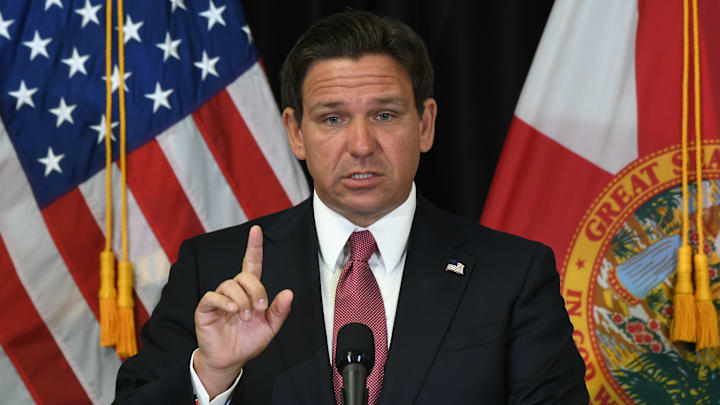The news that Ron DeSantis, Florida's governor, might allocate around $3 million to Inter Miami CF for the construction of Miami Freedom Park is, to say the least, a hot topic for debate. On one side, soccer fans are thrilled about the idea of a brand-new, state-of-the-art stadium. On the other, critics are questioning the use of public funds for a project that, while grand, raises questions about its priorities.
Imagine this: a brand-new, modern stadium, with a capacity for thousands of passionate fans. Miami Freedom Park promises not only to be the home of Inter Miami but also a landmark in the city, capable of attracting tourists and generating jobs. But does the math add up? Is this investment really advantageous for the people of Florida? Or are we looking at yet another example of private interests overshadowing the public good?
Follow MLS Multiplex on X (Twitter).
DeSantis, known for his firm and often controversial positions, seems willing to put his name next to this ambitious project. And, of course, there are those who see this move as a strategic gesture to gain popular support and solidify his image as a leader betting on development and modernization. However, the irony might play against him. After all, it's not the first time we've seen politicians getting entangled in infrastructure projects that end up being a financial burden.
The Major League Soccer (MLS) has been growing and solidifying, attracting renowned players and nurturing new talents. Inter Miami, with its bold and ambitious management, led by none other than David Beckham, is a clear example of this expansion. A cutting-edge stadium could undoubtedly further boost the team and the league. But it seems there's a fine line between the dream and the economic reality.
Proponents of the project argue that Miami Freedom Park will be an economic development engine, generating jobs in the construction and operation of the stadium, as well as attracting events and tourists. For them, the $3 million is an investment that will bring returns in taxes, local commerce, and international visibility.
On the other hand, critics are quick to point out what they call a "spectacle of inverted priorities." They question whether, in a state with so many social and infrastructural needs, it's justifiable to allocate such a significant amount for a stadium. The metaphor of the scorpion in the pocket aptly illustrates the dilemma: is DeSantis really willing to part with this money for a project that, in the eyes of skeptics, could wait?
In times of economic crisis and political uncertainty, the discussion about using public funds for private projects gains even more relevance. The construction of Miami Freedom Park undoubtedly brings to the forefront important questions about resource management and governmental priorities. And, of course, we can't forget the old saying: "there's no such thing as a free lunch." Is the population of Florida ready to bear the indirect costs of this venture?
Another point that deserves attention is the transparency in the process. How will these $3 million be managed? Will there be adequate oversight to ensure that every cent is well spent? History shows us that, often, a lack of clarity in projects of this magnitude can lead to scandals and resource misappropriation. Public trust is a precious commodity, and any slip-up can have disastrous consequences for DeSantis' image and Inter Miami itself.
Looking at other examples, both in the United States and abroad, we see that building stadiums with public money is a complex and nuanced topic. In some cases, the results are positive, with regional development and economic growth. In others, however, we see abandoned structures and unpayable debts.
